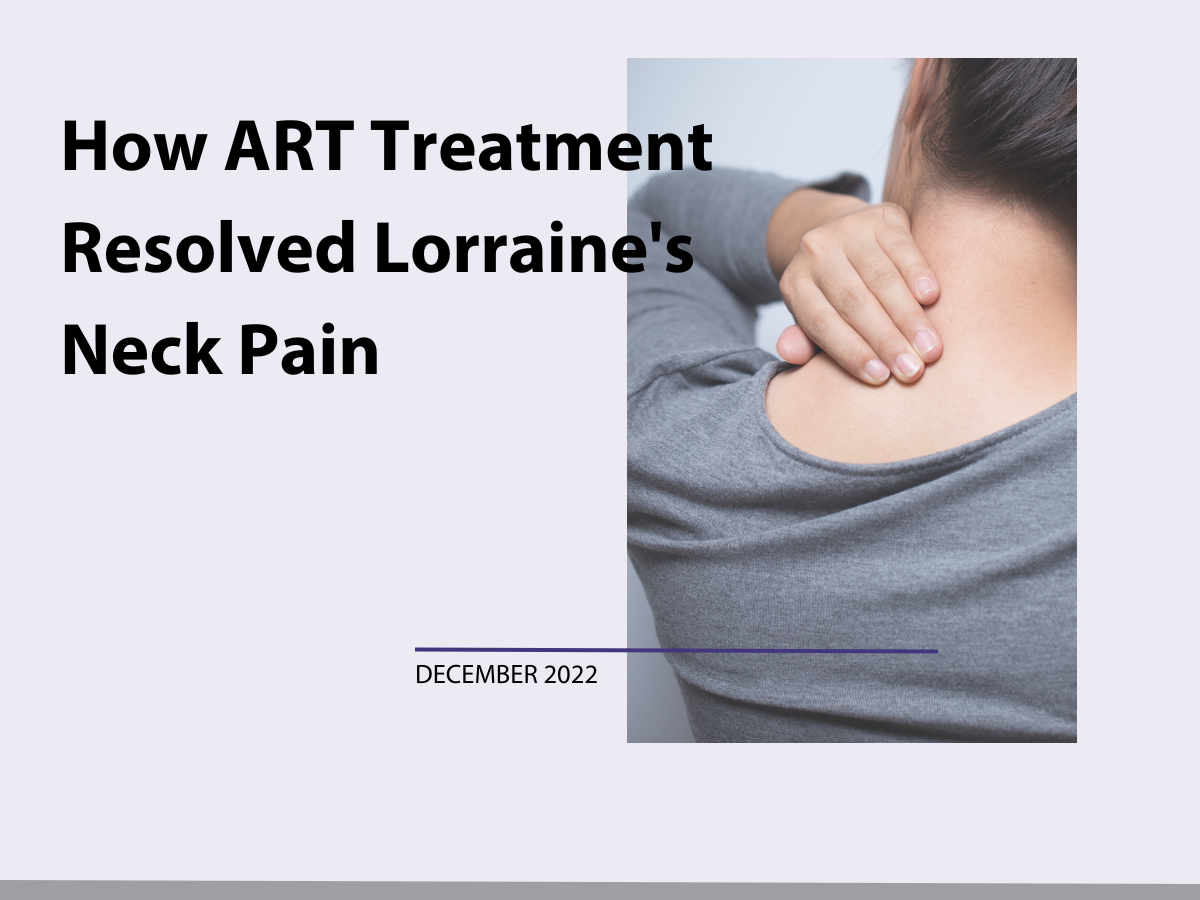ART Treated What Common Pain Relief Couldn’t
As part of our Advanced Full Body Online seminars, we invite patients experiencing soft–-tissue or nerve dysfunction to be treated by Dr. P. Michael Leahy. The goal of this segment is two-fold: help patients feel better faster with ART treatment and teach ART Certified Providers™ how to use ART treatment in a real, clinical setting.
The patient
Lorraine Ayers was a part of ART’s Patient Case Studies in December 2022 and presented with pain in both sides of her neck.
One morning, Lorraine woke up and could not move her neck with intense pain following for a couple of weeks. Over the course of a couple of months, the pain subsided a little, but there was still pain.
Sudden neck pain like Lorraine’s is a common occurrence. In fact, according to the National Library of Medicine, one in three people report experiencing neck pain each year.
The symptoms
With everyday activities such as shopping or repetitive work tasks, Lorraine’s neck will tense up which limits her ability to move her neck and head freely.
Lorraine reported her neck pain radiating to the tops of her shoulders. The most pain comes from turning her neck.
After getting X-rays, her results came back normal. Her first methods of treatment included getting adjustments and cortisone injections to relieve the inflammation.
Soon after, she was unable to continue getting adjusted due to the severe pain.
The treatment
ART Certified Providers™ follow a diagnostic process unique to Active Release Techniques® (ART®) treatment.
What is ART treatment?
ART treatment is a non-invasive system that treats soft-tissue and nerve dysfunction at the source. This hands-on treatment uses a combination of provider touch, and tension with patient movement to pinpoint and treat the origin of the affected area.

A patient-friendly explanation of the ART Diagnostic Algorithm to explain the process of ART treatment.
Step 1: Find the source of pain.
Lorraine’s specific movement to test the source of pain was turning her neck from side to side. She was instructed to stop turning as soon as she felt pain while Dr. Leahy felt for the tension.
Step 2: Feel for contributing sources.
Lorraine’s Cervical 7 Vertebrae (C7) resisted almost all movement from being jammed forward, which led the occiput and atlas to reject neck movement.
Step 3: Treat the problem.
To correct Lorraine’s C7, Dr. Leahy utilized ART protocols surrounding the vertebra of her neck.
Once the tension was released on the right side, the left side was quick to release. Lorraine was instantly able to turn her head further with ease.
Dr. Leahy went back to focus on the rectus capitis lateralis to correct the tension. Dr. Leahy performed a few more ART passes before the final head turn test.
The results
After ten minutes of ART treatment, Lorraine was able to move her neck without limitations and immediately noticed her shoulders had dropped and stopped compensating for her pain.
Want to witness the magic of ART treatment for yourself? Watch the full video on YouTube.
